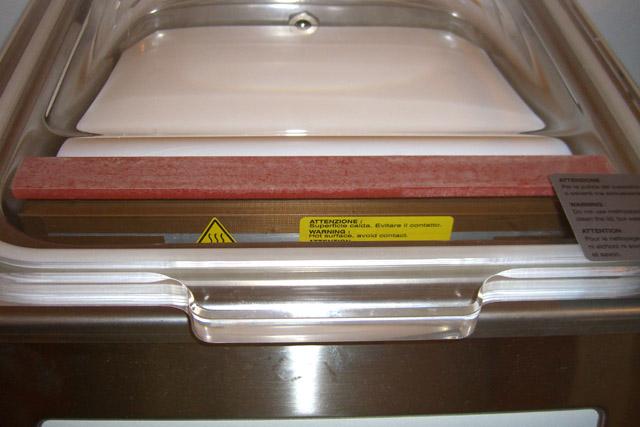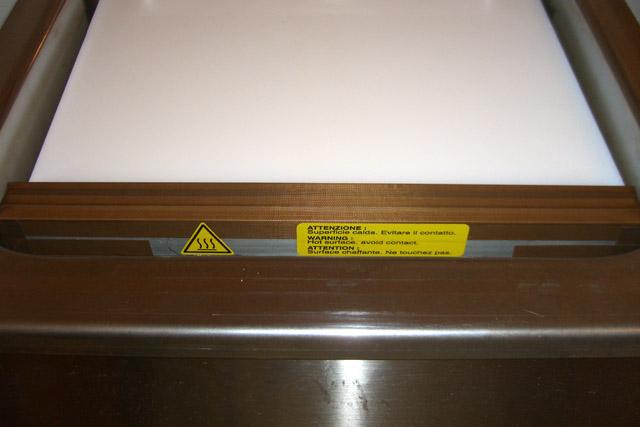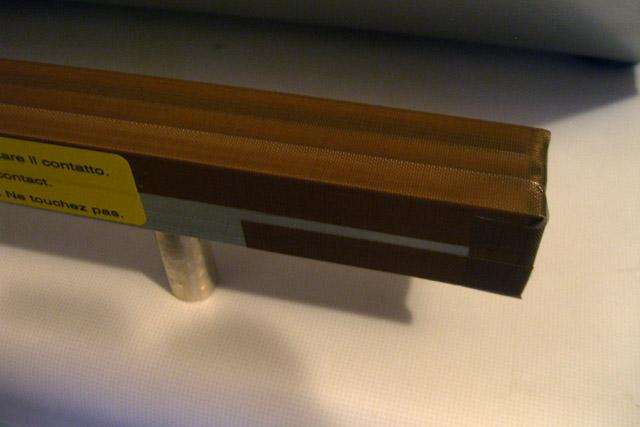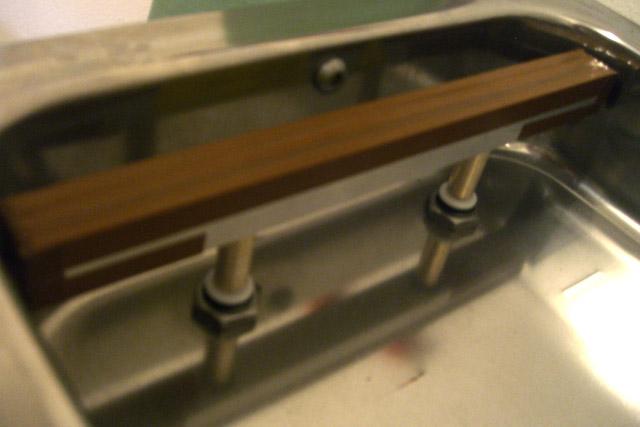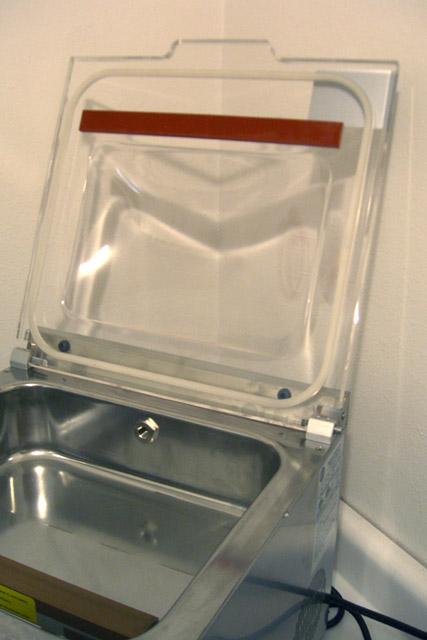
LoftyNotions
participating member-
Posts
161 -
Joined
-
Last visited
Content Type
Profiles
Forums
Store
Help Articles
Everything posted by LoftyNotions
-
"Modernist Cuisine" by Myhrvold, Young & Bilet (Part 3)
LoftyNotions replied to a topic in Cookbooks & References
I am measuring the one I have as: 22 cm wide 28.5 cm deep 35 cm high Get it confirmed first by another poster before you start building. Wow, Anna. That's the same size as my case. Larry -
So roughly 60 percent liquid for Heston and 70 percent liquid for Linda. The only difference in the bulk ingredients (liquid-wise) seems to be the drier cheeses used. It'd be interesting to see if those recipes produce a sliceable cheese product. These two recipes use about half of the sodium citrate of the mac & cheese recipe also. I might have to sacrifice a chunk o' cheese tomorrow to at least answer the freeze / thaw question. Larry
-
Sounds reasonable, especially when you consider Heston Blumenthal's version he made for his "perfect burger" in his second In Search of Perfection book didn't contain carrageenan at all. His recipe consisted of manzanilla sherry infused with garlic, peppercorns and fresh thyme, sodium citrate and comte cheese. Linda from the Playing with Fire and Water blog also did a version a couple years ago with sake, sodium citrate and parmesan. Both work fine as a "processed cheese slice" for sandwiches, melting on burgers, etc. without the addition of carrageenan. I'm wondering if the primary role of the carrageenan comes into play after the cheese is melted into the hot water and pasta. I haven't seen Heston's recipe, but I'd guess that the fluid quantity as a percentage of the cheese in his recipe is lower than in the mac & cheese recipe above, which is close to 60 percent of the cheese weight. If so, that could account for not using carrageenan. The unanswered question for me at this point is what happens if you freeze it without carrageenan. Larry
-
I'm not sure how much stabilization is from the carrageenan and how much is from the sodium citrate. My guess is that a lot of the stabilization is from the citrate and the carrageenan is mostly for thickening. It might be worth an experiment with some cheap cheese. Worst case, you get some gritty thawed cheese you have to suffer through alone. I bought a portable scale that reads to 100ths of a gram. It has been satisfactory for my purposes. I think it was about $25.00 US with shipping. I've been using a much higher proportion of Cheddar than listed above. It doesn't seem to have much effect on the final product other than flavor. Larry Edit to fix transposed letters
-
Clearly, for the queso, we skip the pasta part. I am guessing you can go straight from the "melted and emulsified" step and proceed directly to adding in the flavors you want for the queso. But the question is, at this point, how thick is the sauce? Is it too thick? If I wanted to thin it out, what would I use? More beer? Water? Milk? I think that sauce thickness is going to depend totally on the serving temperature. Using proportions similar to those listed above, at room temperature I've achieved a consistency that I'd guess to be slightly too thick for queso. It's still too liquid to grate, but solid enough that you'd have problems breaking chips. I'd either use slightly less carrageenan or add more liquid. As far as what to use, go by your tastes. Make up a batch, take a little bit out and let it cool to serving temperature. If it's too thick, titrate the remainder with some liquid (I'd go for the beer ) I'd probably try cutting the carrageenan by one third or one half as a starting point otherwise. HTH, Larry Edited for spelling
-
And number 4... Payday is on Friday.
-
Interesting. I see from some online photos that the thing may be installed 90 degrees wrong. I'll have to see if it's easy to change or impossible. We have a Delta faucet that is designed to have the handle mounted to the right. There are a couple problems with having a side mounted handle though. First, you're limited to which hand you use to regulate the water. Second, with it mounted to the side, every time you reach for it with wet hands you drip water on the counter and leave water marks. I've considered mounting ours like yours is currently and reversing the water lines. I think it would probably work better that way. My wife likes it where it is though. As far as what to do with the markings, I'd ignore them.
-
Did you just follow the normal mac & cheese recipe and sub in the gryuere? Phaz, yes, I varied only the original cheeses, and otherwise followed the recipe. I did the "main" cheese as sharp Cabot cheddar and the "secondary" cheese as gruyere. It came out tasting great. The cheddar dominates, so I might vary the blend a bit more towards the gruyere, or maybe use gouda. I have about 3 or 4 more dinners worth of cheese in the freezer in 160 and 320g portions for when I want to cook 2 or 4 portions. I had the idea (no idea if it is original or not) to use smoked cheese, so I think I'm going to get smoked gouda and use that with cheddar or even a smoked mozzarella. Something about smoky MM&C sounds awesome. I did a smoked mac & cheese for guests last weekend. It was a big hit. I used smoked cheddar and gouda, each with about 2-1/2 hours of apple wood smoke. Definitely worth doing. Larry Edited for punctuation.
-
Chris, From the Parametric recipe on 3-237, "Polyphosphate blend refers to Nutrifos 088 or a similar proprietary blend..." I haven't done any of the modernist sausages yet, but I'd think the phosphates are going to perform the same function they do in traditional sausages. If it was me, I'd try it. Let us know how it turns out. I might be too cavalier about this, but my feeling is that if I try to get the exact brand name compound every time I'm never going to get anything cooked. Here's a link to a Nutrifos information sheet: Nutrifos Link Best of luck, Larry
-
Do you have any stovetop / hotplate options that would get you in to the correct temperature range?
-
Nicely done, Chris! Thanks for leading the way. As far as aligning the grind, do we need to lay it out on something as it comes out of the grinder maybe? You're right, a "sous grinder" would definitely help. What you have for patties looks pretty good to me. And my wife says, "Nice buns". Larry
-
On my chamber first the chamber evacuates, then the sealer bar is pressed up against the red piece in the lid, then energized to make the seal. I believe that's how all chamber sealers work, since there aren't any evacuation channels in the bags. The bar is actuated pneumatically. Since drawing a vacuum will reverse the forces applied to the chamber walls of an autoclave, it's hard to know if the chamber will take it. It sounds like a fun project though. HTH, Larry
-
One thing I wish I had put on my original order is Transglutaminase.
-
Were you able to source Insta Cure #1 locally? I have some short ribs I would like to brine them but don't know where to find Insta Cure. I found it online but it will take a few days to a week to get it. Any suggestions? Hi Anne, I'm not sure where you live, but if you have a butcher / meat market that handles sausage supplies, or smokes their own sausages they might be a source. Another possibility would be a sporting goods or hardware store that carries smokers. HTH, Larry
-
My last -- and anyone's best -- shot at elBulli
LoftyNotions replied to a topic in Food Traditions & Culture
Take a tattoo gun and get yourself signed. Congratulations, and be very, very nice to your wife. Larry -
I measured it at 19.5mm, .76 or .77 inches.
-
A couple of these are a bit blurry, but hopefully they show what you need to see. View from front, lid closed. The brown is the tape on the seal bar, the red is the piece on the lid it seals against. View from front, lid open. The white behind the sealer bar is a filler plate. Quartering view of sealer bar looking toward the front. Lid open Bar end showing sealing and cut-off wires under tape. Edit to remove duplicates.
-
That does seem to be an error. If you look at guinea hen breast directly above, I think you'll find how the table for pheasant breast should read. The pasteurization time on 5-137 appears to be an error also.
-
As another data point for you, the MVS31 has a 3/4" molded clear domed lid. I don't know what kind of plastic it is however. Larry
-
Chris, I ran in to a similar situation with the same recipe but a different sealer. I ended up cutting the brine quantity in half and adjusting salt / spices accordingly. It was still a challenge getting everything into one bag. I'm tempted to try a dry cure with adjusted salt / spices. The main reason I like brine though is I can inject the meat with 10 to 15% of its weight of brine and then let it soak. I wonder if the reason for so much water was so the meat could be submerged, as in a bucket. Larry
-
I've used my cold smoke adapter a couple times now, and it does help to lower the temperature in the smoker cabinet. My limited observations of cabinet temperatures so far are that the smoke generator, as the only heat source, and installed in the cabinet raises the cabinet temp about 60 to 70 degrees over ambient on a calm day. With the cold smoke attachment I've seen about 30 degrees over ambient on a calm day and 15 degrees over ambient on a windy day. These are based on not many data points, but should give you some idea of general effectiveness of the cold smoke attachment. Larry
-
Several of us on this forum have Bradley smokers. Because of the temperature swings with the digital smoker that you mentioned, I opted for the Original Bradley Smoker, and use an Auber PID for temperature control. The PID keeps temperatures in tight control, but there is some variance in cabinet temperatures from front to back and top to bottom. It's close enough for the girls I go with though. I've opted to place my temperature sensor just under the lowest shelf I cook on which gives me the maximum cabinet temp. I haven't played around much with humidity control yet, having just learned the importance of it. The 2 easy ways I see of controlling it somewhat are the vent opening and the surface area of the water dish / tray you put in the bottom to catch the spent pucks. Over all, I've been very happy with the OBS, and would recommend it. Larry ETA The only potential advantage I see to the Digital Bradley is that it also comes in a 6 shelf version. I find that the smaller OBS works fine for my needs, and using double racks, I can smoke over 12 pounds of Snack Sticks at a time.
-
My biggest concern with this device is the chamber size. The seal bar is only 8.5 inches wide, and the maximum height food you can put in the chamber is 3 inches. That really limits the size of what you can seal. Also, be sure to read blackp's excellent post on chamber sealers in general. Larry
-
"Modernist Cuisine" by Myhrvold, Young & Bilet (Part 2)
LoftyNotions replied to a topic in Cookbooks & References
I agree with you, Fat Guy. After Nathan gets done with Pastry if he has any energy left he could do his 3rd opus on fermentative processes, including wine, beer, cheese, dry cured meat products... Just kidding, Nathan! -
I can only speak for the MVS31. There is a simple calibration routine you run through when you first get it. It takes less than a minute. Since the Vacmasters run for a set time, not to a preset vacuum, there isn't a calibration that I know of. They run for the time you set, seal, and evacuate.


